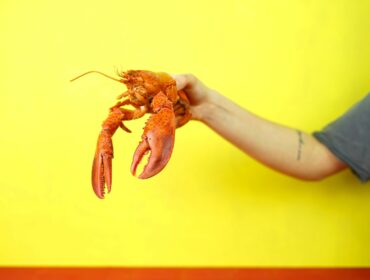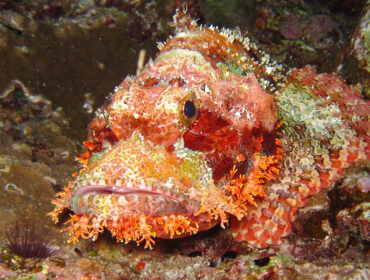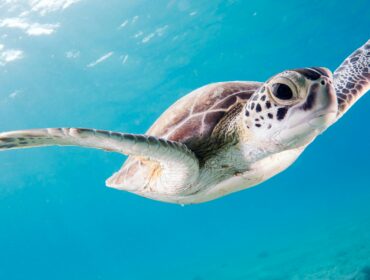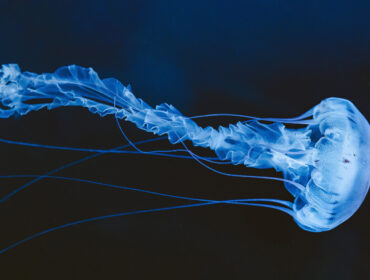Frogfish are one of those bizarre, yet highly evolved families of fish that don’t even resemble fish, but once you see a frogfish for the first time, you’ll never forget the sight. The longlure frogfish — a particularly short, round species — comes in many sizes and colors depending on where it lives, such as shallow sponges. They remain completely still 90 percent of the time.
Frogfish, so named due to their squat resemblance to the common amphibians, range in size from around 5cm to the giant frogfish’s colossal 40cm. They also resemble frogs in that their fins are more like legs, which they use to walk slowly over the seabed and atop sponges and corals to lie in wait for their prey.
Color is often not much help in identifying different frogfish since some have many different colors to allow them to camouflage themselves within their environment. Depending on the species, this color change might take seconds or weeks. The skin of some species can also be adorned by bumps, flaps, hairs, and tassels which further allow for mimicking the nearby seabed, corals, sponges, or weeds. This also explains how divers can often cruise straight past them, oblivious to their presence.
There are not many other fish that you might mistake for a frogfish but it can be exceptionally difficult to distinguish between the sexes or species. Short of getting out your scalpel, there is no way to tell male from female. Since coloration is a useless method of identification for all but the most rare species, you should be looking out for species-specific features such as what form the lure takes (mimicking perhaps a worm or fish), the number of eye spots, and the number of spines.
Fortunately, the idyllic island of Bonaire offers many sites in which to find longlure frogfish, including one of the most recognizable dives, Something Special, on the island’s west coast. If you get lucky, you might be able to watch the frogfish spawning, which can be dangerous for the smaller male because of the cannibalistic nature of the fish.




